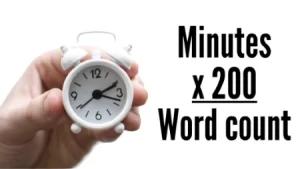Effective writing isn’t just about what you say, it’s about how easily audiences can comprehend it. To connect with the intended audience, the message should be clear, engaging and relevant. This will increase readability and get your message across, so you can capture attention, reach your goals and create greater impact.
As Jenn mentioned in a previous blog, she and I attended the PRSA ICON conference in October. The three days were filled with lessons about how to effectively communicate a message to an intended audience. Here are the key takeaways about writing with purpose:
Know Your Audience
First, identify who your audience is and what they care about to craft a winning pitch that will resonate with them. By understanding their needs, you can tailor the message to their interests to ensure the content is understood and then acted upon.
At Teak, we help socially responsible companies and nonprofits achieve recognition and increase revenue through PR efforts. When reaching out to journalists, it’s important to read their recent material to ensure we’re pitching timely news to the right person. For example, we wouldn’t send a press release about an art exhibit to an environmental features reporter, or a media alert about a turkey drive to a finance journalist.
Keep it Short
Longer content does not mean better communication. In fact, concise writing and purposeful word choice conveys the message more effectively and saves time. Nearly 70% of reporters spend less than one minute reading a press release, according to a 2014 study by Greentarget. People have even shorter attention spans now, more than a decade later.
A good formula to follow is A.R.T., or Average Reading Time. On average, people read about 200 words per minute. Word count divided by 200 equals minutes. If a reporter spends one minute reading your pitch, it should be no more than 200 words. That is roughly the length of the first four paragraphs of this blog.
Journalists are working under tight deadlines and receive hundreds or thousands of PR pitches a day. Help make their job easier by focusing on key, relevant facts.

Readability Matters
If an email, press release, or pitch letter is difficult to understand, a reporter won’t read it. The readability of your content matters. In PR writing, not only is brevity key overall, but so is your word length. Audiences are more likely to engage with content that is concise, focused, uses active voice and avoids jargon. Stick to the main message and avoid obscuring the point with unnecessary information. Long sentences can lose meaning.
In most cases, simple, shorter words can convey the same meaning as longer, more complex words. There are online readability tools to check if how easy your content is understand, such as Grammarly, Datayze Readability Analyzer and Hemingway App.
Creating content that is easy to read can often take time, but it’s worth it. Make every word count.


